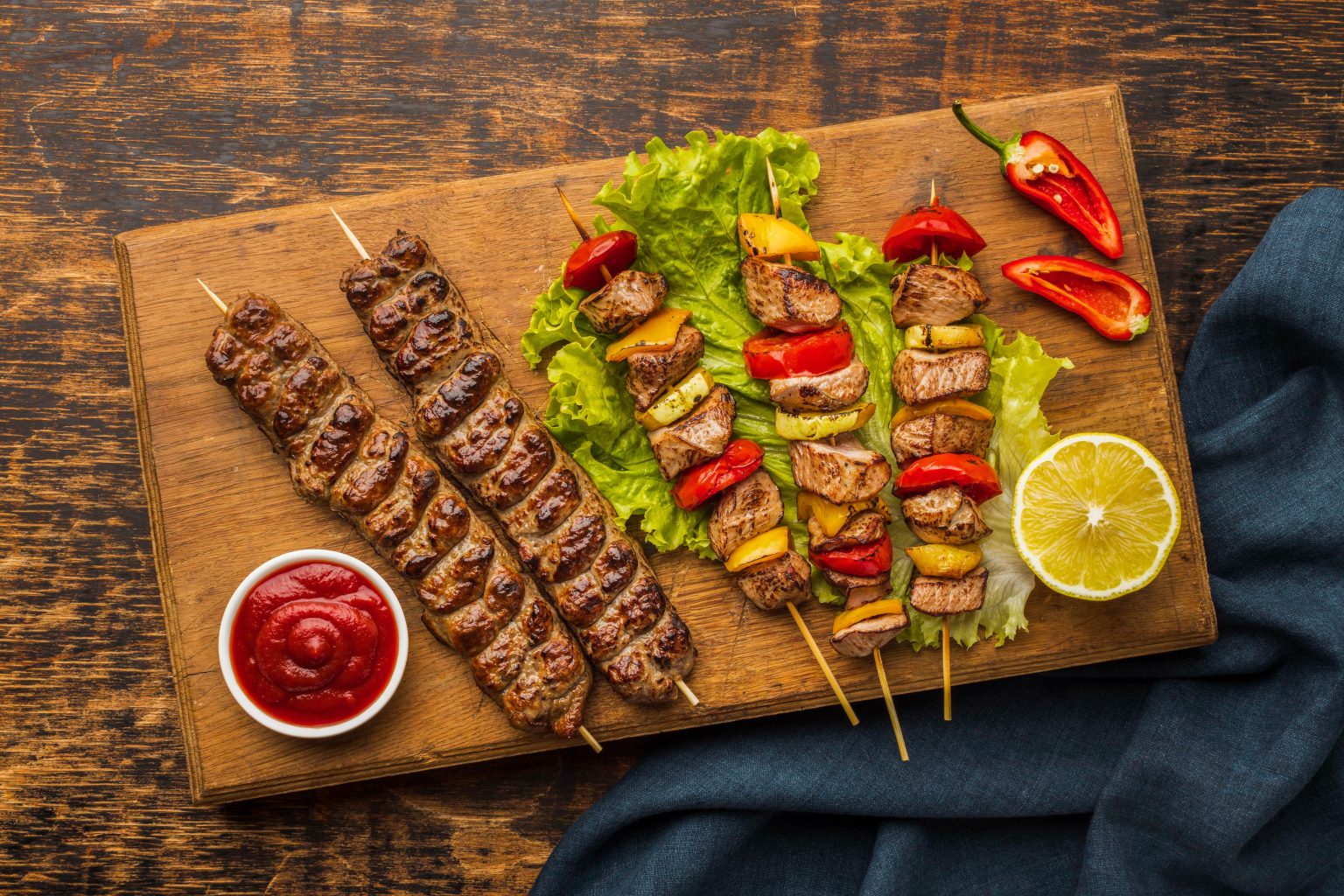Every year, food lovers around the world look forward to July 12 as it marks World Kebab Day. This is a day dedicated to celebrating and feasting on a variety of kebabs from different cultures. From tender lamb and chicken skewers to rich and smoky beef, kebabs are enjoyed for their unique blend of flavours and juicy texture. Originating in the Middle East, this dish has become a global favourite, cherished for its savoury taste and the way it brings people together.
World Kebab Day is not just about indulging in delicious food; it’s also an opportunity to explore the diversity that kebabs offer. Various regions have their own unique recipes, each with distinct spices and cooking methods. Whether you are a fan of traditional kebabs or intrigued by modern twists, there is always something new to try.
So why not mark World Kebab Day on your calendar? Gather your friends and family, fire up the grill, and enjoy the mouth-watering experience that only a well-prepared kebab can provide. It’s a celebration of flavours, culture, and the joy of sharing good food with loved ones.
The Cultural and Historical Significance of Kebabs
Kebabs have a rich history, dating back to ancient times. They are enjoyed across many cultures today, showcasing a versatile and much-loved dish.
Origins and Evolution
Kebabs likely originated in the Middle East, particularly in regions like Turkey and Iran. Ancient Persian soldiers are said to have cooked meat on their swords over open fires. Over time, kebabs evolved, with various marination and cooking techniques introduced by the Turks, Arabs, and other cultures.
In India, kebabs became popular with the advent of Mughal cuisine, leading to unique variations like seekh kebabs and galouti kebabs. Central Asia also played a significant role in the development of kebabs, influencing recipes with their own traditional spices and ingredients.
Global Spread and Variations
Kebabs spread globally, carried by trade routes and migrations. They became popular in Europe, Africa, and the Americas. In Turkey, doner kebabs and shish kebabs are staple dishes, while in the Mediterranean, one can find shawarma and gyros.
In South Asia, kebabs are a street food favourite. Variations like vegetarian kebabs are now common, offering healthier options. Each region has its own spin on kebabs, incorporating local flavours and techniques, which underscores their universal appeal.
Kebabs in Modern Culture and Cuisine
Kebabs have transcended time and geography, becoming an integral part of modern cuisine. They are popularised through social media, with food lovers sharing their favourite kebab spots and recipes. Special days like World Kebab Day, celebrated on July 12, highlight their cultural significance.
Kebab shops are now prevalent in many countries, offering a variety of options to cater to diverse palates. From street vendors to high-end restaurants, kebabs are a culinary staple. Efforts to make kebabs healthier and vegetarian-friendly have further broadened their appeal.
Preparing and Enjoying Kebabs
Kebabs are a popular dish enjoyed all over the world. Whether you prefer traditional recipes or modern versions, there are countless ways to prepare and savour these delicious treats.
Traditional Kebab Recipes
Traditional kebab recipes often feature meat such as lamb, chicken, or beef marinated with spices, garlic, and herbs. The meat is skewered and grilled, giving it a smoky and juicy flavour.
Ingredients:
- Minced meat or chunks of meat
- Garlic and onion for flavour
- Spices: cumin, coriander, paprika
- Lemon juice for marination
- Olive oil
- Fresh herbs like parsley or coriander
Popular traditional recipes include Shawarma, Souvlaki, and Shish Kebab. These dishes are often served with bread, rice, or salad.
Modern Twists and Healthier Alternatives
There are many modern and healthier versions of kebabs that use ingredients like vegetables, mushrooms, and even fruit. A popular choice is the vegetarian kebab, which can include corn, potatoes, and other vegetables marinated and grilled.
Healthy Ingredients:
- Yogurt marinades for reduced fat
- Tzatziki sauce as a light dressing
- Mixed vegetables: peppers, tomatoes, mushrooms
- Lean meats: chicken, fish, or turkey
- Fresh lemon juice and herbs for freshness
These alternatives provide a guilt-free way to enjoy kebabs without compromising on flavour.
Kebabs as a Social Culinary Experience
Kebabs are more than just food; they are a part of the social fabric in many cultures. Preparing kebabs often involves family and friends, making it a social culinary experience.
Social Elements:
- Gathering around the grill or barbecue
- Sharing recipes and techniques
- Posting on social media to celebrate World Kebab Day
- Enjoying with rice or flatbreads as a communal meal
Events like World Kebab Day foster a sense of community among kebab lovers and provide an opportunity to celebrate this special day with loved ones.



